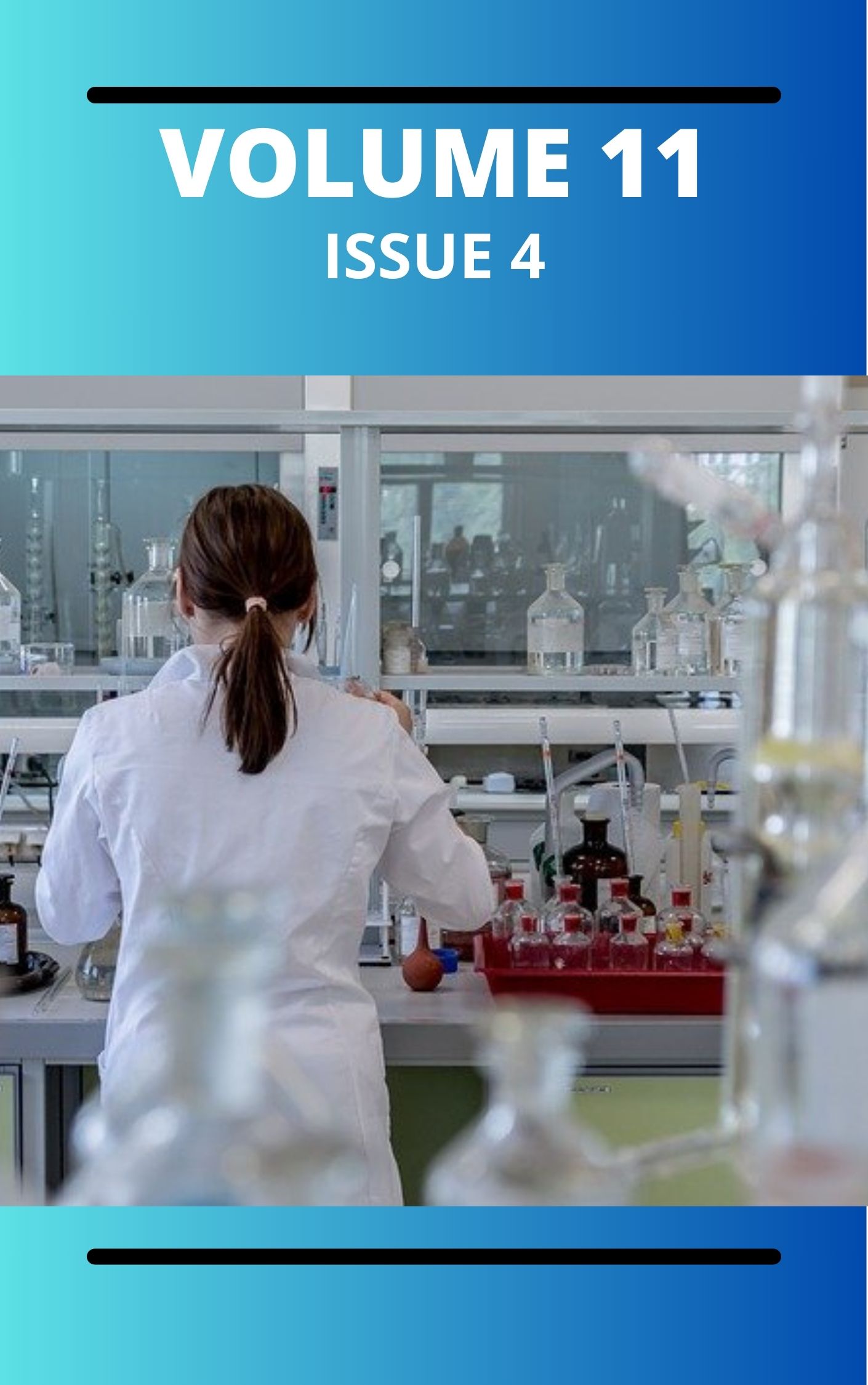Crystal Structure, in Silico Studies and Anti-diabetic Potentials of 3-e-(1,5-dimethyl-3-oxo-2-phenyl-2,3-dihydro-1h-pyrazol-4-yl)hyd -razinylidene]pentane-2,4-dione(hdpp)and its Cu(II) and Ni(II) complexes
DOI:
https://doi.org/10.4314/2cv4bb03Keywords:
Hydrazone, X- ray crystallography, Co(II), Ni(II), Cu(II) and Fe(III) complexes, In silico and antidiabetic studiesAbstract
The hydrazone, 3-E-[2-(1,5-Dimethyl-3-oxo-2-Phenyl-2,3-Dihydro-1h-Pyrazol-4-yl)Hydrazinylidene]Pentane-2,4-dione, HDPP was synthesized by coupling diazotized 4-aminoantipyrine with pentan-2,4-dione at < 5 0C. The Cu(II) and Ni(II) complexes were prepared by refluxing stoichiometric amounts of metal salts and HDPP in ethanol for 6 h at 60 0C. The ligand and complexes were characterized by UV-Vis, IR, NMR, and mass spectroscopies as well as by C, H, N, S elemental analysis, conductivity measurement, quantitative chloride determination and single crystal X-ray diffraction analysis. The compounds were screened in vitro for antibacterial activity against P. aeruginosa, S. aureus, Ecoli(Eco 6), E. coli(13), B. subtilis, S. pneumonia, P. mirabilis, S. intermedius and K. pneumoniae. The compounds were assayed for in silico molecular docking and in vivo anti-diabetic potentials. FTIR data showed shifts in ⱱ(C=O), ⱱ(N=H) and ⱱ(C=N) of the complexes implicating the involvement of these groups in complexation. Proton NMR shifts accounted for the methyl, phenyl and N-H protons of the ligand but indecipherable for the complexes due to paramagnetic effects. Conductivity values of HDPP and complexes showed the ligand and its complexes to be neutral. X-ray crystallographic data of HDPP show the ligand to have orthorhombic crystals with pbca unit cell a = 28.501(4) Å, α = 90°, b = 15.0494(19) Å, β = 90°; and c = 7.3234(9) Å, γ = 90° with Z=8. HDPP and its complexes exist in hydrazo form instead of azo form. It showed no activity against test organisms, but the complexes showed various degrees of sensitivities against the test bacterial strain at 10μg/cm3. Acute toxicity (LD50) tests showed that HDPP and [Cu(HDPP)2Cl2] were non-toxic. In silico studies proved them to be drug candidates for diabetes with good oral bioavailability. In vivo, antidiabetic tests showed HDPP and [Cu(HDPP)2Cl2] to reduce the blood level of diabetic rats to within 61 to 67% better than the control drug glibenclamide within 14 days of treatment.
Downloads
Published
Issue
Section
Most read articles by the same author(s)
- Uchechukwu Susan Oruma, Pius Oziri Ukoha, Collins U. Ibeji, Lawrence Nnamdi Obasi, Obinna C. Okpareke, Ebubechukwu N. Dim, Klaus Jurkschat, Ponnadurai Ramasami, Synthesis, Spectroscopic, Biological and DFT Studies of 2,4,6-Tris(4-Carboxyphenylimino-41-Formylphenoxy)-1,3,5-Triazine and its Trinuclear Dy(III) and Er(III) Salen Capped Complexes , Communication In Physical Sciences: Vol. 7 No. 3 (2021): VOLUME 7 ISSUE 3
- Uchechukwu Susan Oruma, Pius Oziri Ukoha, Lawrence Nnamdi Obasi, Synthesis, Characterization and Biological Studies of Trinuclear Ce(IV) Salen Capped Complex with 5-amino-2,4,6-tris(4-carboxybenzimino)-1,3-pyrimidine , Communication In Physical Sciences: Vol. 5 No. 3 (2020): VOLUME 5 ISSUE 3
Similar Articles
- Thomas Ndidi Asiwe, Idongesit Bassey Anweting, Atim Sunday Johnson, Nzikahyel Simon, Solomon Enejo Shaibu, Eco-Friendly Synthesis and Characterization of Silver and Zinc Nanoparticles Using Aqueous Extract from the Bark of Antiaris toxicaria , Communication In Physical Sciences: Vol. 12 No. 1 (2024): VOLUME 12 ISSUE 1
- Stella Mbanyeaku Ufearoh, Onyinyechi Uloma Akoh, Christian Odih, GC-MS Characterization and Anti-Anaemic/Haematological Activity of Ethanol Extract of Solanum Aethiopicum Leaves , Communication In Physical Sciences: Vol. 12 No. 1 (2024): VOLUME 12 ISSUE 1
- Wisdom, Ivwurie, Daniel, Okiriguo, Evaluation of n-Alkanes Hydrocarbon from two Communities in Udu Local Government Area, Delta State , Communication In Physical Sciences: Vol. 7 No. 4 (2021): VOLUME 7 ISSUE 4
- Oyakojo Emmanuel Oladipupo, Abdulahi Opejin, Jerome Nenger, Ololade Sophiat Alaran, Coastal Hazard Risk Assessment in a Changing Climate: A Review of Predictive Models and Emerging Technologies , Communication In Physical Sciences: Vol. 12 No. 6 (2025): Volume 12 ISSUE 6
- Irene Edem Johncross, Fanifosi Seyi Josiah, Abidemi Obatoyinbo Ajayi, Resource recovery from Sugar Cane Biomass for the Synthesis of Silicon Nanoparticles , Communication In Physical Sciences: Vol. 12 No. 1 (2024): VOLUME 12 ISSUE 1
- Aminu Ismaila, Abubakar Sadiq Aliyu, Yakub Viva Ibrahim, Evaluation of Gamma Radiation Dose Level in Mining Sites of Riruwai, Kano, Nigeria , Communication In Physical Sciences: Vol. 8 No. 1 (2022): VOLUME 8 ISSUE 1
- Ahmad Rufai Bala, Abdullahi Sahal , Phytochemical Screening and Anti-microbial Properties of Herbal Medicines used for Treatment of Typhoid and Bacterial/Viral Infection in Kaduna State , Communication In Physical Sciences: Vol. 11 No. 1 (2024): VOLUME 11 ISSUE 1
- David Adetunji Ademilua, Advances and Emerging Trends in Cloud Computing: A Comprehensive Review of Technologies, Architectures, and Applications , Communication In Physical Sciences: Vol. 10 No. 3 (2023): VOLUME 10 ISSUE 3 (2023-2024)
- Nathaniel Atamas Bahago, Gideon Wyasu, Sorption Studies of Methylene Blue Using Activated Carbon Produced from Rice Husk , Communication In Physical Sciences: Vol. 3 No. 1 (2018): VOLUME 3 ISSUE 1
- Simbiat Atinuke Lawal, Samuel Omefe, Adeseun Kafayat Balogun, Comfort Michael, Sakiru Folarin Bello, Itunu Taiwo Owen, Kevin Nnaemeka Ifiora, Circular Supply Chains in the Al Era with Renewable Energy Integration and Smart Transport Networks , Communication In Physical Sciences: Vol. 7 No. 4 (2021): VOLUME 7 ISSUE 4
You may also start an advanced similarity search for this article.




